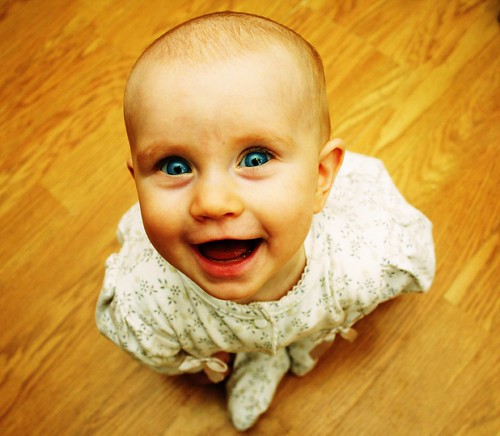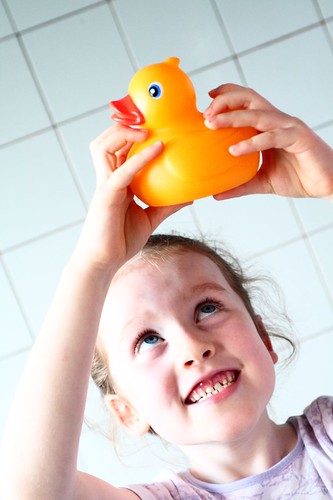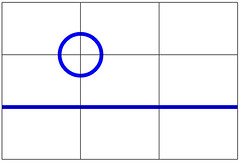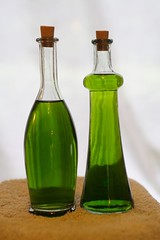This is a photo of my youngest daughter taken a little while ago. She is actually sitting on the floor - although her legs were a bit obscured by the fact that she was leaning forward so it does look more like she was standing!
Here's a quick summary of how I did it:
- I was wanting a high viewpoint, so I popped my her on the floor (she could sit but not crawl at that stage - ideal for this sort of thing!) and, using a wide-angle lens, took a few photos of her from close above her head. I played a kind of "peek-a-boo" game with the camera to get the giggles.
- The lighting was very simple - just an on-camera flash (strobe) rotated around so that the light bounced off the ceiling (if you view the large version of the photo on Flickr you can just about see the reflection of the camera and flash in her eyes).
- I selected the best image and adjusted it in Photoshop as follows:
- I used a curves adjustment layer to get the colour effect. I wanted a fairly high-contrast kind of look, so I started off by adjusting each of the RGB curves so that the curve slope for that was steepest in the zones corresponding to the main detail in the photo. Then I played around with the curves a bit more until I got an overall colour cast that I liked.
- I made a selection of the blue part of the eyes (from the original photo), enhanced the blue colour a bit (again using curves), and then superimposed them over the rest of image to get the blue of her eyes to really stand out.





